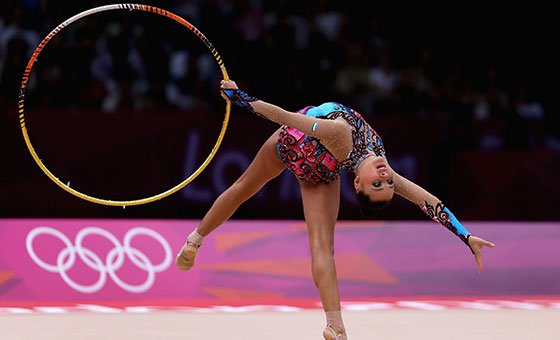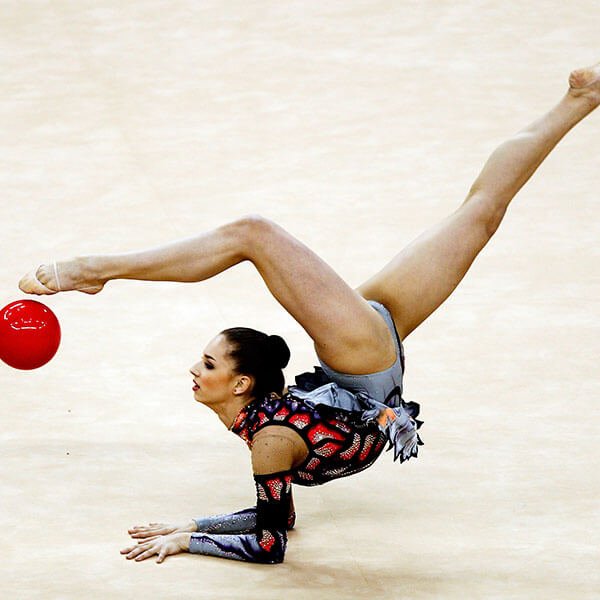Rhythmic gymnastics is a sport in which gymnasts perform on a floor with an apparatus: hoop, ball, clubs, ribbon or rope. The sport combines elements of gymnastics, dance and calisthenics; gymnasts must be strong, flexible, agile, dexterous and coordinated. Rhythmic gymnastics is governed by the International Gymnastics Federation (FIG), which first recognized it as a sport in 1963. It became an Olympic sport in 1984, with an individual all-around event. The group all-around competition was added to the Olympics in 1996. At the international level, rhythmic gymnastics is a women-only sport. The most prestigious competitions, besides the Olympic Games, are the World Championships, World Games, European Championships, European Games, the World Cup Series and the Grand Prix Series. Gymnasts are judged on their artistry, execution of skills, and difficulty of skills, for which they gain points. They perform leaps, balances, pivots, and flexibility movements, along with tossing, catching, rolling and otherwise manipulating the apparatus.

Rhythmic Gymnastics
Our Gallery
Necessary Information
Rules and Regulations
Rules and Regulations of Rhythmic Gymnastics
……. …. …… ……. ……. …….. ……..
Injury & Medical Advice
Injury & Medical Advice of Rhythmic Gymnastics
……. …. …… ……. ……. …….. ……..
Talent Search Program
Talent Search Program of Rhythmic Gymnastics
……. …. …… ……. ……. …….. ……..
Personality Development
Personality Development of Rhythmic Gymnastics
……. …. …… ……. ……. …….. ……..
















